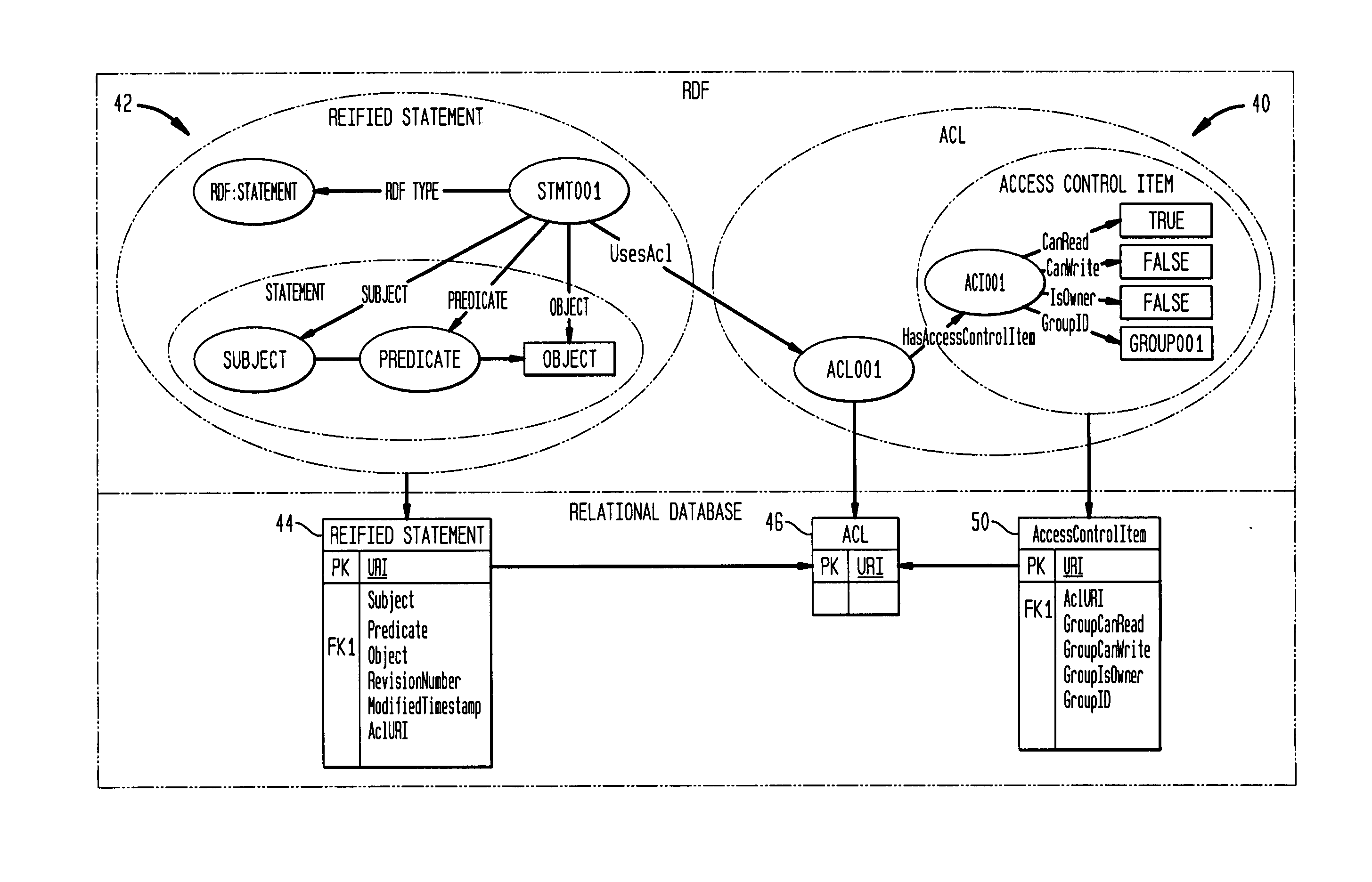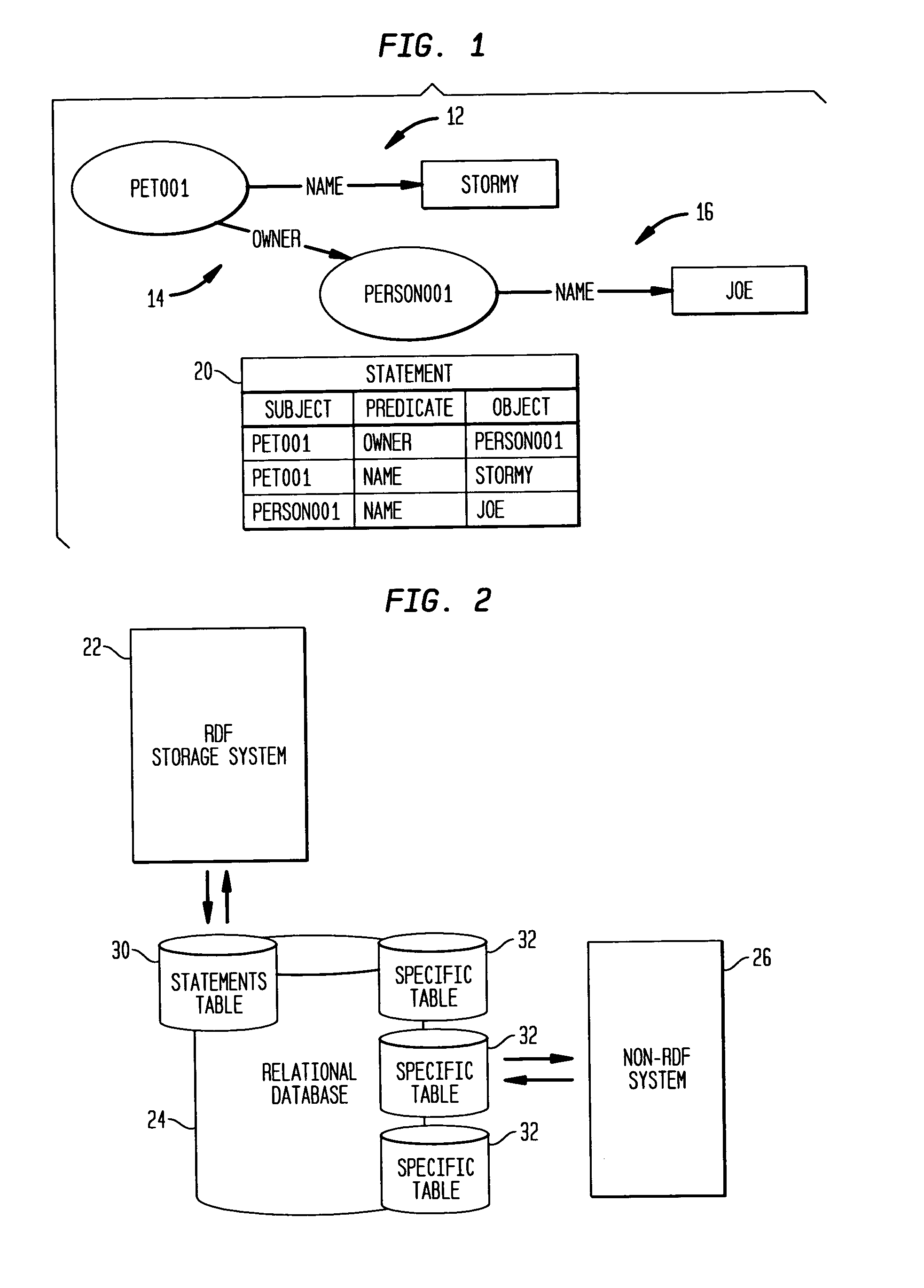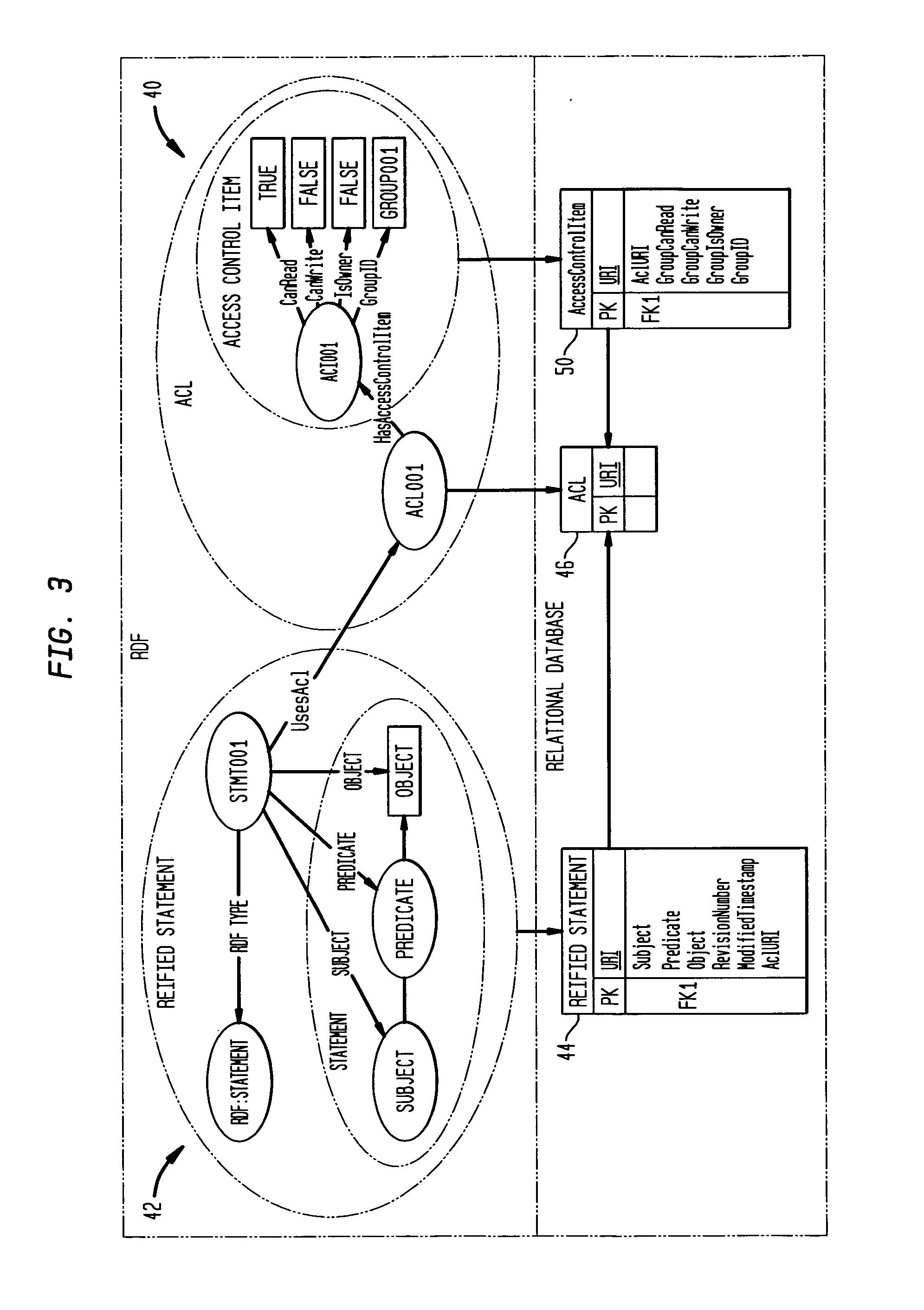Method and system for controlling access to semantic web statements
a semantic web statement and access control technology, applied in the field of semantic web technology, can solve the problem that no conventional rdf storage system can provide different users with views of rdf graphs, and achieve the effect of efficient storage of semantic web statements
- Summary
- Abstract
- Description
- Claims
- Application Information
AI Technical Summary
Benefits of technology
Problems solved by technology
Method used
Image
Examples
Embodiment Construction
[0019]FIG. 1 depicts how RDF statements may be stored in a conventional RDF repository. Three RDF statements, referenced at 12, 14 and 16, are shown in FIG. 1, and these statements are stored in a Statement Table 20 in a relational database with columns for the “subject,”“predicate” and “object” of the RDF statements. In one statement 12, the subject is Pet001, the predicate is owner, and the object is Person001. In a second statement 14, the subject is, again, Pet001, the predicate is name, and the object is Stormy. In the third shown statement 16, the subject, predicate, and object are, respectively, Person001, name and Joe.
[0020]FIG. 2 illustrates a conventional RDF storage system modified in order to implement the present invention. In particular, FIG. 2 shows a conventional RDF storage system 22, a relational database 24, and non-RDF system components 26. FIG. 2 also shows a conventional Statements Table 30, and a set of Specific Tables 32.
[0021] Most conventional RDF reposit...
PUM
 Login to View More
Login to View More Abstract
Description
Claims
Application Information
 Login to View More
Login to View More - R&D
- Intellectual Property
- Life Sciences
- Materials
- Tech Scout
- Unparalleled Data Quality
- Higher Quality Content
- 60% Fewer Hallucinations
Browse by: Latest US Patents, China's latest patents, Technical Efficacy Thesaurus, Application Domain, Technology Topic, Popular Technical Reports.
© 2025 PatSnap. All rights reserved.Legal|Privacy policy|Modern Slavery Act Transparency Statement|Sitemap|About US| Contact US: help@patsnap.com



